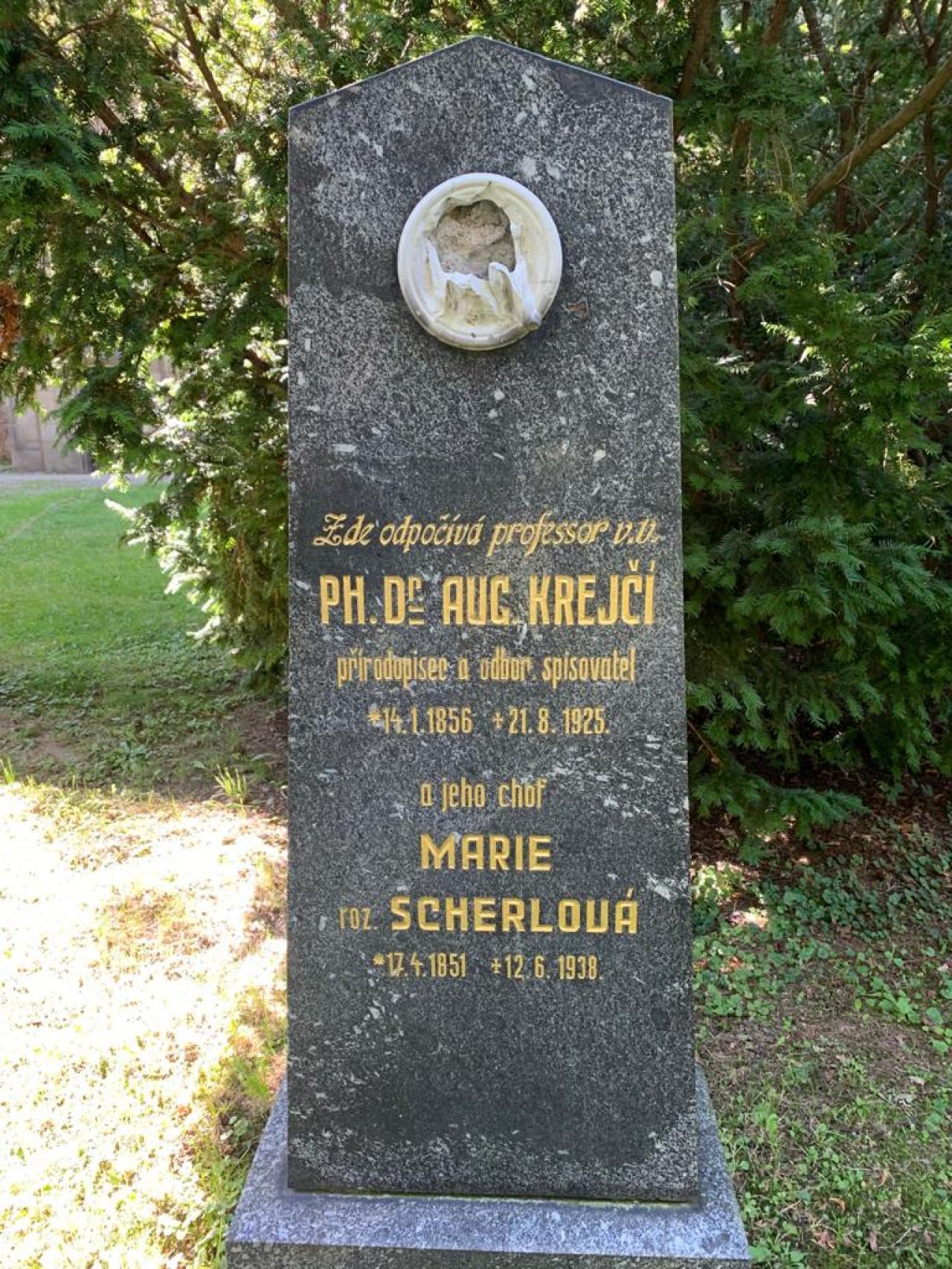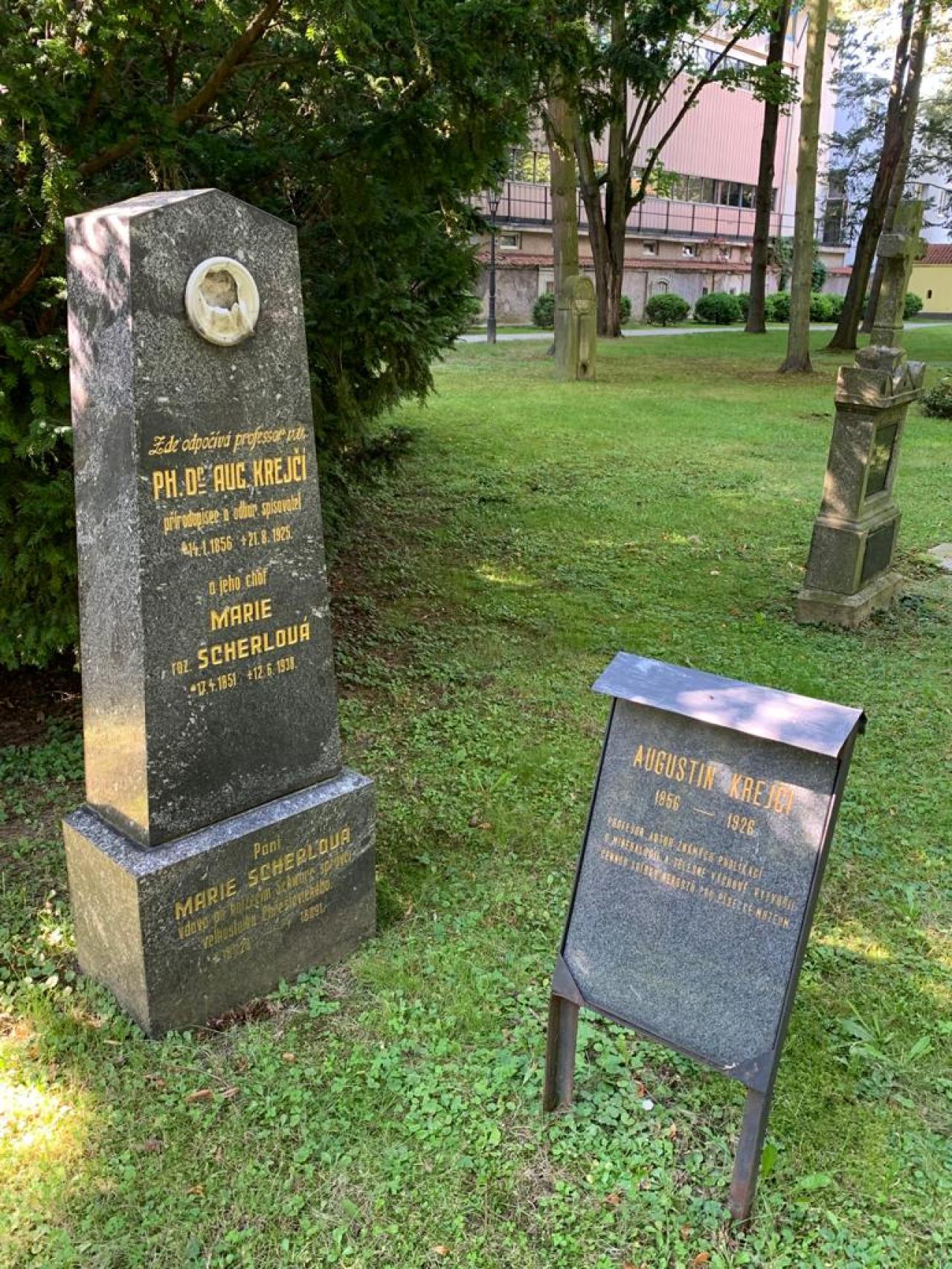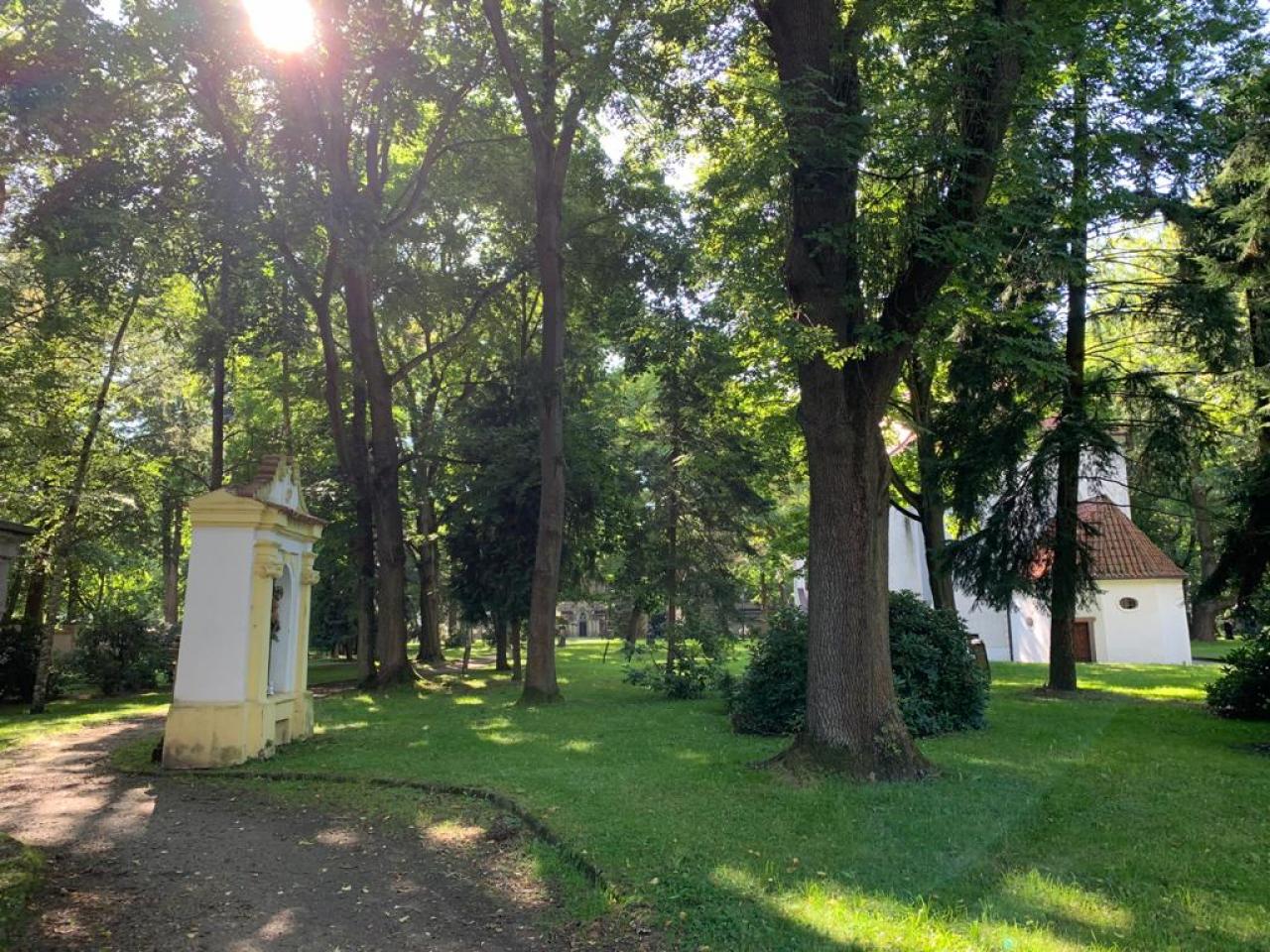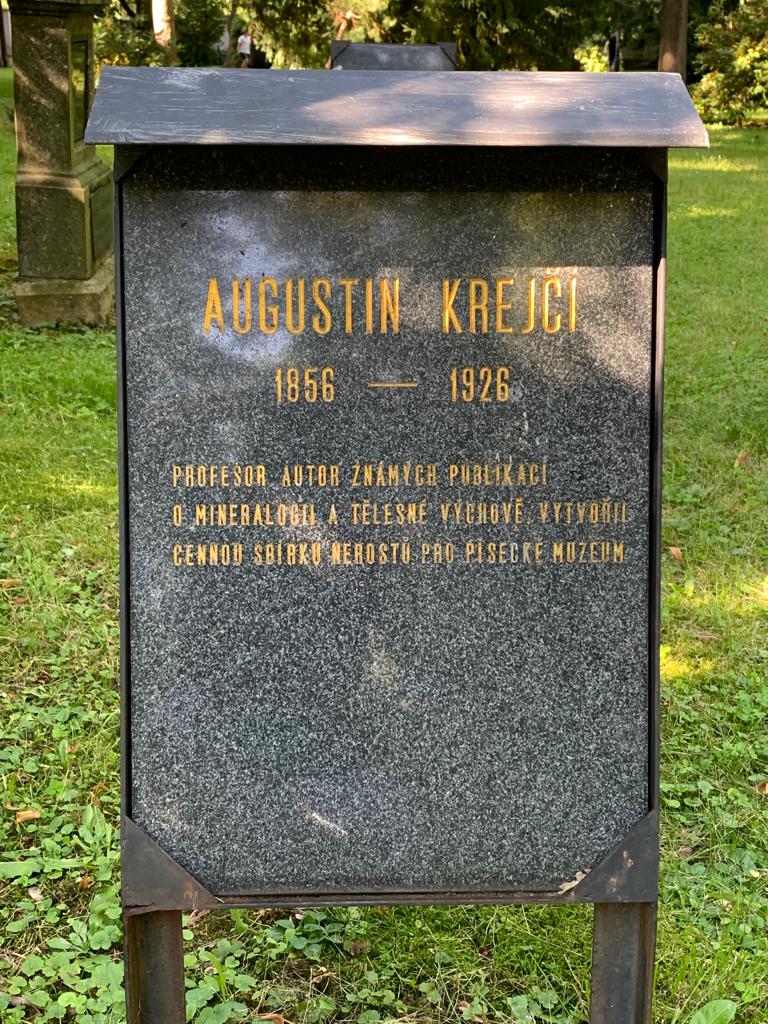

August Krejčí`s Grave and Commemorative Plaque in Písek
- The grave and memorial plaque of August Krejčí (1856-1925) in the memorial park at St. Trinity Church in Písek, commemorate the significant involvement of this multifaceted naturalist. In the area around Písek, Krejčí intensively researched minerals and rocks and his name is associated with the discovery and naming of the controversial mineral písekite.
- August Krejčí grew up in Písek. After high school he studied natural sciences at the Faculty of Arts of the Charles-Ferdinand University in Prague, but was prevented from completing his studies. As an important member of the Sokol sports organisation and one of its trainers, he was certified in 1879 to teach gymnastics in high schools. He worked in this field in Prague`s Karlín until his retirement. However, his love for natural sciences - especially mineralogy, to which his teachers in mineralogy, Emanuel Bořický and Karel Vrba, led him - did not leave him and in 1894 he became a Doctor of Philosophy after defending his dissertation entitled On Some Minerals of Písek. Krejčí spent every holiday in Písek and when he retired he returned to his hometown and settled there permanently. Krejčí`s varied publication activities included not only physical education (his The Science of Skating is the first book on the theory of ice skating in the Czech language) and archaeology, but also botany and entomology. But his greatest interest remained one of the natural sciences - mineralogy. Beside his works on new minerals, such as jarosite or axinite, he presented a general regional mineralogical overview in his book Minerals of Písek and their deposits. He published works on the history of feldspar mining, but also on gold panning, and was one of the first mineralogists to pursue this activity on a scientific basis. Krejčí researched intensively and for a long time the gold mines of Havirky in the Písek Mountains. August Krejčí`s activity in relation to the discovery of a new radioactive mineral, which he named písekite in honour of his town, was remarkable. This mineral species was not recognized by the scientific community in his time because the study of this mineral is very difficult - it has a complicated chemical composition and is difficult to measure morphologically because it forms only imperfect crystals. The question of recognizing písekite as a valid mineral species is still open today.A great merit of Krejčí`s was the collection of Písek minerals not only for the National Museum in Prague, but also for the museum in Písek. Here he laid the foundation for an independent mineralogical collection by writing its inventory in 1905. Krejčí not only organized this collection, but he also continuously expanded it. It is noteworthy, that Krejčí created a home mineralogical laboratory in which he used sophisticated instruments for mineralogical analysis made by himself, such as a polarizing microscope, a scale for determining the density and weight of minerals, or a reflecting goniometer for morphological measurements of crystals.August Krejčí died on 21 August 1925 and was buried in the town cemetery in Písek. This cemetery was closed in 1950 and in the following years was converted into a remembrance park, which was opened to the public in 1977. August Krejčí`s grave was preserved and a memorial plaque commemorating his work in the field of physical education and mineralogy was installed nearby.
- References
- Cícha, J.: Písecký mineralog a přírodovědec August Krejčí (s připojenou bibliografií). In: Prácheňské muzeum v Písku: zpráva o činnosti za rok 2000. Písek 2001, s. 52–60.Fröhlich, J.: Výstava: Písecký mineralog August Krejčí (výročí 75 let od úmrtí). Prácheňské muzeum v Písku 4.5.–1.6.2020. In: Výběr: Časopis pro historii a vlastivědu jižních Čech, č. 2, 2000, s. 167–168.Internetový zdroj:Kostel nejsvětější Trojice. In: Národní památkový ústav. Památkový katalog. URL: https://www.pamatkovykatalog.cz/kostel-nejsvetejsi-trojice-18680313 [5.9.2021].
- LeO
- Show in map
Keywords
; ; ; ; ; ; ;
Connected places
Gold Mine Havirky in the Písek Mountains
Prácheňské Museum in Písek
Pamětní deska Emanuela Bořického v Milíně








